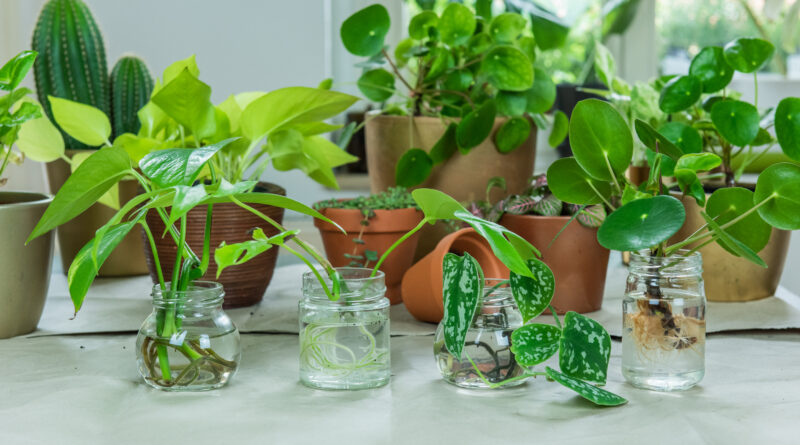Handmade Gifts: Consider sharing a piece of your garden this Christmas
By AMY ROGNLIE
A friend’s family celebrates Christmas with a lovely tradition. Each September, they draw names, keeping their selection secret. Each person then spends the next few months creating a Christmas gift for his or her chosen family member. The rules are simple: the gift must be handmade. Over the years, and with varying levels of skill and talent, this family has knitted, painted, sewn, hammered, sawn, built, baked and sculpted. They have composed songs and poems, and laboriously written beloved texts in calligraphy, to be framed and hung on the wall. They have created photo albums, pressed flowers for homemade cards, and collected favorite recipes. .
The point is that gift-giving from the heart is far more meaningful than filling up your virtual cart and clicking “Buy Now” on Amazon. Do not get me wrong, I love the convenience of online shopping as much as the next person (maybe more than the average person, truthfully), but sometimes it is nice to slow down. Most of us do not have time to handcraft a gift for every person on our list, but maybe this is the year you choose to make at least one or two of your gifts.
“It was not a very splendid show, but there was a great deal of love done up in the few little bundles, and the tall vase of red roses, white chrysanthemums, and trailing vines, which stood in the middle, gave quite an elegant air to the table.”
— Louisa May Alcott, Little Women
Back in the day, gifts from the garden were among the most coveted and appreciated. Produce, seedlings and cuttings were thoughtful presents that produced beauty as well as sustenance for the recipient. Seeds from one’s garden were carefully gathered and saved for next year’s garden and often generously shared with others. Today, Seed Saver’s Exchange in Decorah, Iowa, is one organization that stewards not only seeds, but also the many stories of people who, decades ago, gratefully received seeds as gifts and have grown and shared their seeds and their harvests with others ever since.
Besides seeds, cuttings or divided plants make thoughtful gifts for a gardening friend or loved one. If you have an ornamental sweet potato vine (Ipomoea batatas), you can take cuttings now before the first frost. The cuttings will root in a vase of water in just a few days and will happily live on your windowsill in water over our short Texas winter. Arrange a few bushy bunches in a pretty jar and tie a ribbon around it to give as a last-minute gift or to decorate your dinner table. Or, after the cuttings have rooted, plant them in unique and colorful pots for thoughtful and inexpensive gifts.
Making leaf rubbings is fun to do with children and can produce some lovely stationery for the letter-writer in your life. Gather leaves from several different trees and bushes. Leaves that are heavily veined work the best. Purchase blank stationery and envelopes from a craft store or make your own hand-folded cards out of ordinary printer paper. Place the leaf underneath the paper and rub over it lightly with the side of a crayon or oil pastel stick until you see the outline of the leaf. Try layering several shades to make unique combinations of leaf shapes and color intensity.
To make inexpensive but impressive holiday décor, small branches that have fallen or been pruned from your trees and shrubs. Making sure the branches are thoroughly dry, lay them out on newspaper and spray with metallic silver or gold spray paint. Stand larger branches upright in a vase or large flower pot and adorn with ribbon, Christmas ornaments, or greenery from your garden or yard. Or use smaller branches to create a memorable centerpiece for the recipient’s holiday table or fireplace mantle.
As the March girls in Little Women remind us, “a great deal of love [is] done up” in a thoughtful, handmade gift that comes from the heart — and the garden.
“Whatever else be lost among the years, let us keep Christmas; its meaning never ends. Whatever doubt assail us, or what fear, let us hold close this day, remembering friends.” — Charles Dickens
Tips for November & December
Our average last frost is usually around Thanksgiving, so if you intend to take cuttings of tender plants, make sure you do so before the first frost.
- Plant wildflower seeds (November)
- Divide perennials (November)
- Mulch everything, especially new plantings (November and December)
- Protect tender plants from early frosts/freezes. You can purchase special plant “blankets,” but old sheets or towels work fairly well. Putting a bucket or tub over an individual plant can also help.
- Plant bulbs (November and December)
- Prune trees and shrubs


